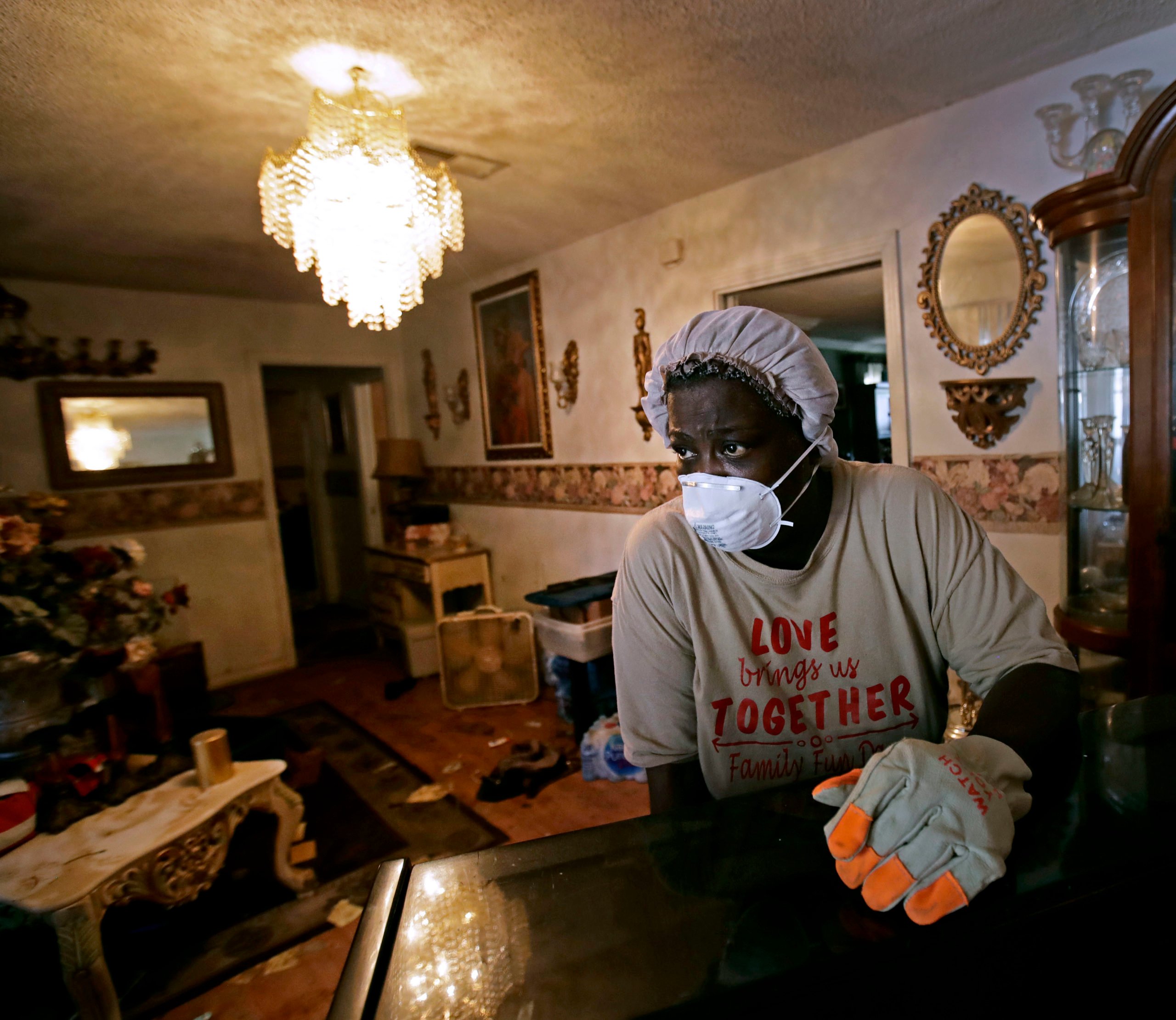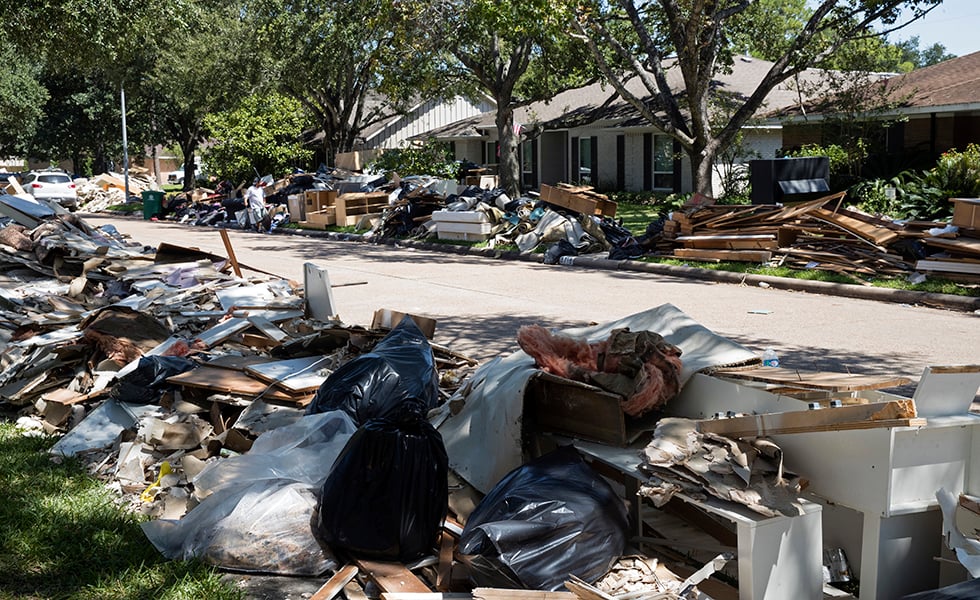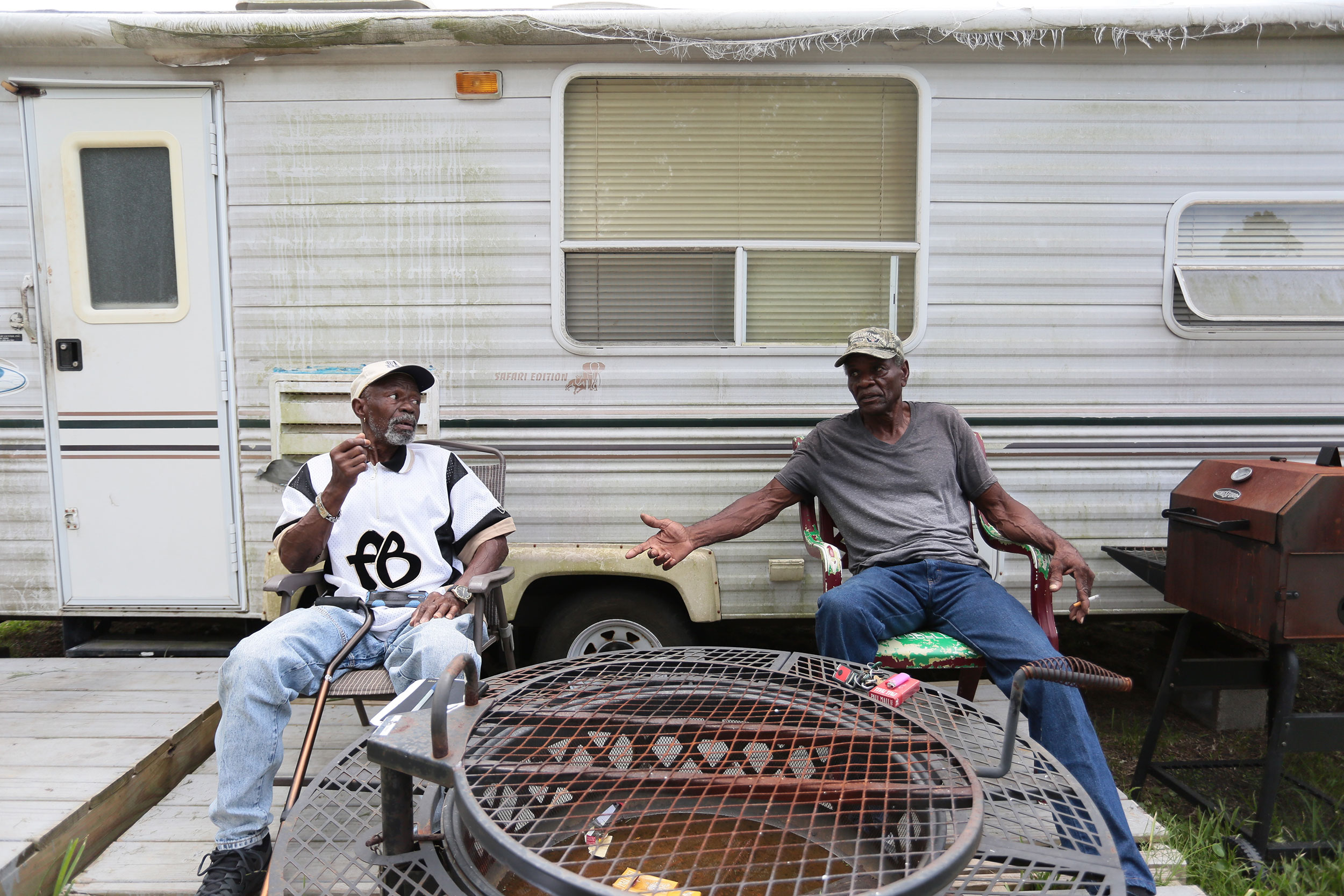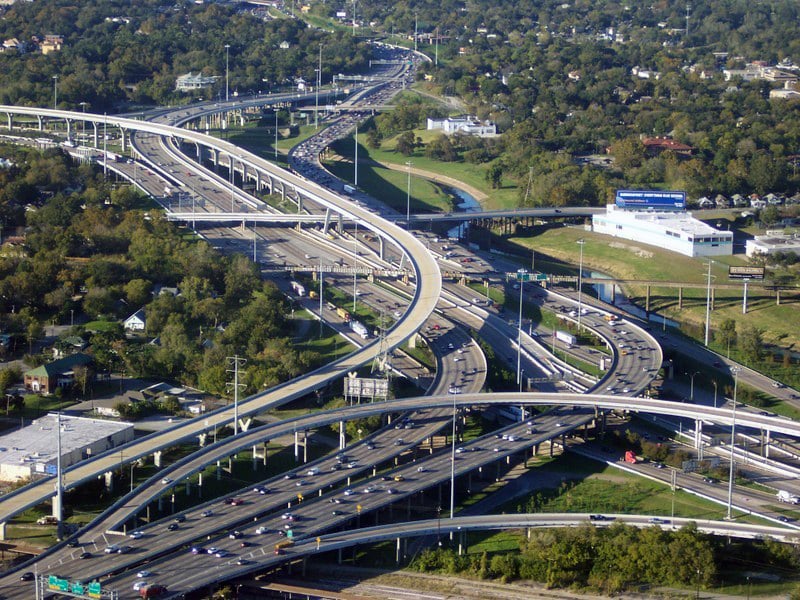
Let the Concrete Pour: ‘Power Moves’ Tracks Houston’s Bleak Transportation History
Kyle Shelton’s even-handed new history never lets the reader forget that one person’s infrastructure disappointment is another person’s happiness.
Jensen Drive, on the east side of downtown Houston, is an unlikely spot to begin a narrative. This bleak stretch of pavement crosses over a sunken Interstate 10, under an elevated I-69 and connects two somewhat scruffy neighborhoods, the largely African-American Fifth Ward and the hardy, largely Latino Second Ward. But this tangle of concrete is where Rice University historian Kyle Shelton begins Power Moves, his meticulously researched account of “transportation, politics and development in Houston.”
Shelton writes that on this spot on Jensen Drive, “The road seems a given.” But this book aims to remind us that all of these layers of concrete aren’t natural at all — they are the result of Houstonians’ choices to build and expand freeways. Before being cut off from the city by the two highways, the Fifth Ward was a thriving working-class neighborhood. It’s just one of many stories in this book that show how transportation choices create winners and losers. Houston is famously home to the widest highway in the world, the 26-lane Katy Freeway: a $28 billion boondoggle that made traffic worse. Is this really the best we can do?
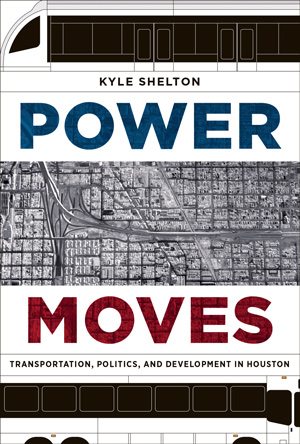
University of Texas Press
$29.95; 342 pages
Shelton himself never asks that question — this is not a polemical book. He just lets us know some people do ask it (mostly the Inner-Loopers, those who live inside Loop 610, the first of the city’s three ring roads), while others, mostly suburbanites, have found road-widening to be a one-size-fits-all solution to our transportation woes.
Power Moves traces the evolution of the area’s transportation policy back to the 1950s and ’60s, when there was really no way for citizens of any background to resist the highway paths chosen by planners and elites. Shelton tells the story of a Fifth Ward resident who woke up one day in 1962 to find Texas Department of Transportation surveyors planting stakes in her front yard, where a highway would soon go. She hadn’t even known that they were coming to take her property. Residents of white, upper-middle-class Memorial Bend were also shocked to find that their neighborhood was in the path of Beltway 8.
Today, thanks to the growth of a process Shelton refers to soporifically as “Infrastructural Citizenship,” many more groups have a place at the planning table. Richard Nixon’s creation of the EPA gave citizens the right to delay and even stop all kinds of projects on the basis of their environmental impacts, as did new Federal Highway Administration rules intended to elicit citizen feedback.
Using these tools, some residents of East Houston’s Second Ward scored a rare victory when they blocked the construction of a highway planned to pass through the heart of the neighborhood, along Harrisburg Boulevard. Activist Richard Holgin organized resistance to the plan in the ’60s and ’70s. It’s interesting, if disheartening, to see that many arguments against highway expansion that we make today were already being voiced then. Community journalist Maggie Landron, writing in Papel Chicano in 1970, argued that “freeways are out of date before they are finished” and that the city should invest in mass transit to provide transportation “for residents within the city … for fifty and seventy-five years from now, not just tomorrow.” Hers are words that have never gone out of date.
Shelton goes on to cover the even more ferocious fight over whether to build rail or high-occupancy vehicle (HOV) lanes along the Hardy Corridor. Neighborhood activists fought for rail along that North Side corridor, much of which passes through an established Latino neighborhood. Meanwhile, county and suburban powers, along with the Chamber of Commerce, ultimately argued that the corridor’s most important function was to get suburbanites to and from work, without paying much attention to the neighborhoods in between, neighborhoods that were there first.
Before being cut off from the city by the two highways, the Fifth Ward was a thriving working-class neighborhood.
The HOV vision won, in a 1983 referendum whose results came as a profound shock to METRO, the regional transportation agency. The agency’s early plans were all mass transit-centric and offered heavy investment in rail, but they kept losing elections. The concrete continued to pour.
Under Mayor Lee P. Brown, 7 miles of rail, which didn’t require a vote because METRO was able to finance them with sales tax revenues, were laid in time for the 2004 Super Bowl. The line connected downtown with then-Reliant Stadium. In 2003, voters finally approved a significant expansion of the rail system. In contrast with Dallas’ DART system, which has many more miles of track, the Houston rail plan was concentrated in the inner city, and to a large extent runs through minority neighborhoods, clearly the fruits of Infrastructural Citizenship.
Yet again, there are no simple transportation victories. A crosstown line that would’ve connected central Houston with the Galleria area was stymied by the NIMBY attitudes of the Afton Oaks neighborhood. In a curious omission, Shelton only mentions Republican congressional representatives Tom DeLay and John Culberson, whose districts include both suburban and inner-loop Houston, as well as Afton Oaks, one time each. Along with former Democratic mayor Bob Lanier, who’s also only mentioned once, DeLay and Culberson were key to the regional opposition to rail. DeLay went so far as to write legislation prohibiting the use of federal dollars to build rail in Houston.
The even-handed Shelton never lets the reader forget that one person’s infrastructure disappointment is another person’s happiness. The vast majority of residents voted against rail in the referendum of 1983, perhaps influenced by the reasoning of Houston City Magazine editor David Legge, who found, in Shelton’s words, the prospect of mass transit “an infringement of the individual rights so sacred to many Texans.” Shelton does point out, without much further comment, that the city had 90 miles of trolley line at one point.
The concrete continued to pour.
In his own objective way, Shelton also points out how racism figured in. However, he doesn’t issue any calls to the barricades or to the toll plazas. He’s just telling the story of Houston transportation, with all its shades of gray. But when he points to the future, in the book’s final chapter, Shelton shows how two contradictory models of development are now in play in Houston, and that neither is likely to eliminate the other. The Grand Parkway, our third ring road, will soon encompass an area as large as Rhode Island. It represents sprawl on steroids — and, as everybody knows, steroids are dangerous. Unchecked sprawl contributed a great deal to the area’s sufferings under Hurricane Harvey.
On the other hand, the inelegantly named North Houston Highway Improvement Project promises to transform the central city by burying and/or eliminating the original freeways that destroyed much of the fabric of the central city back in the 1960s and ’70s. If the buried highways are capped and covered by green space, as was done with Dallas’ Kyle Warren Park, we can expect inner-loop Houston to flourish. This new vision for downtown and its highways began as a widely despised plan to widen I-45 north of downtown and run it under the city center in tunnels. Neighborhoods on either side would’ve suffered. Residents pushed back, and now something better seems to be on the horizon.
Comparing the two visions, Shelton writes, “The two roads signal the nearly impossible task of coordinating infrastructural needs and visions across a major metropolitan area and across time.”
For the foreseeable future, Houston will have to live with both visions, the suburban and the urban. On the other hand, the urban vision here — and in every other city — is much stronger than it was just a few decades ago. Now if we could only improve our sidewalks.
